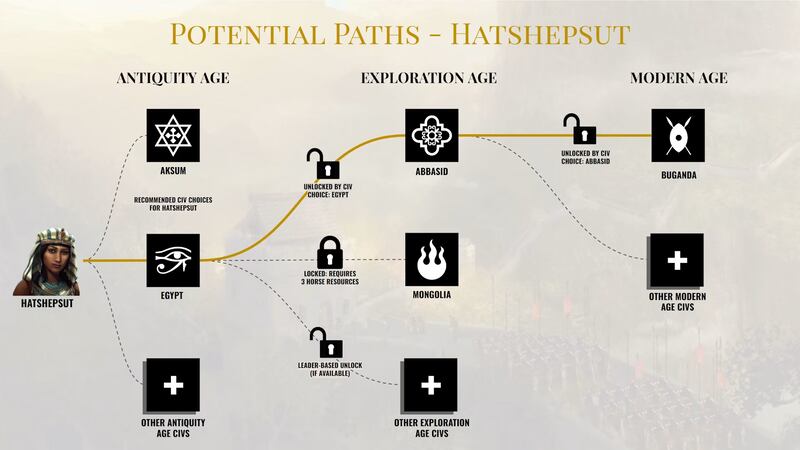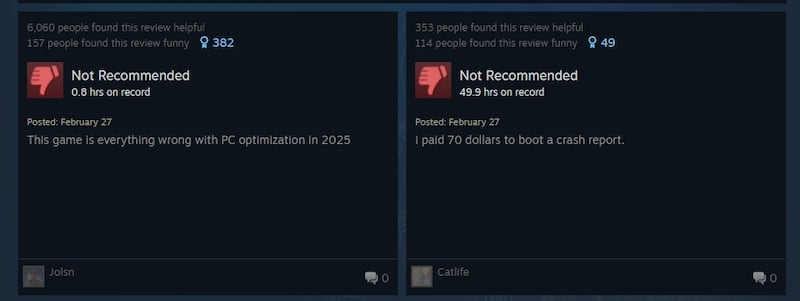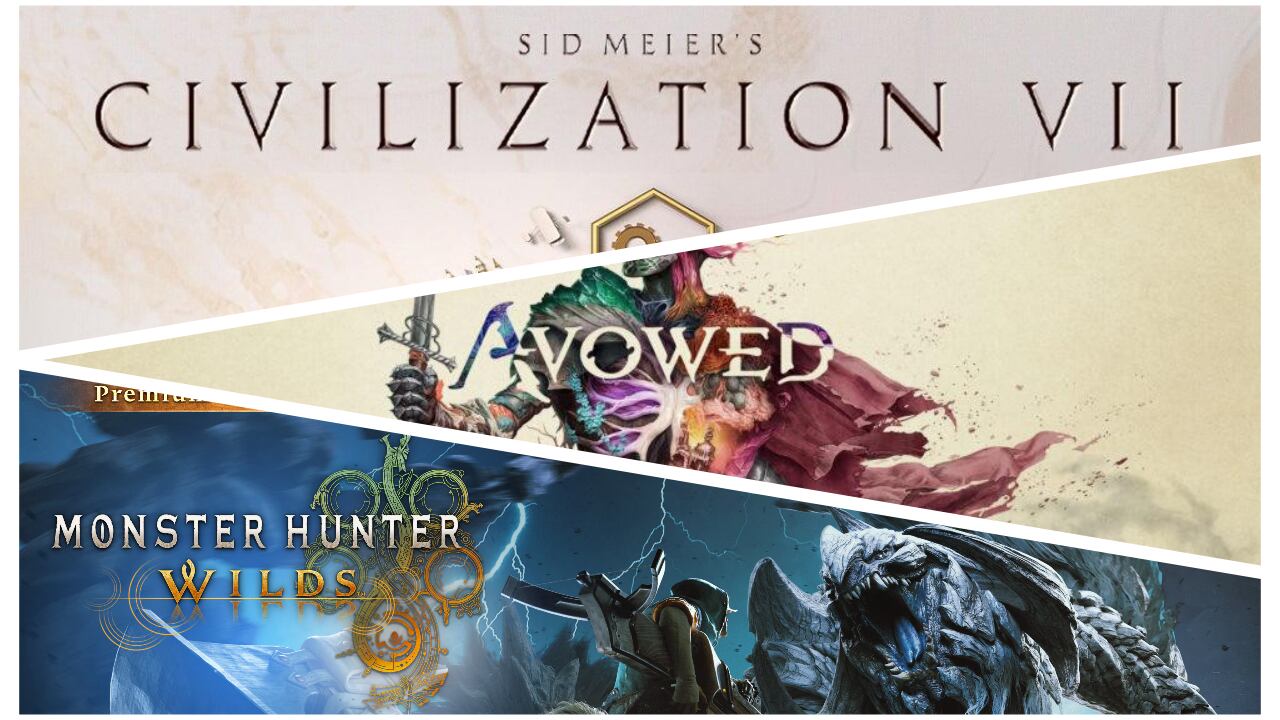The gaming industry has continuously thrived on iteration, with long-standing franchises refining their formulas while introducing fresh elements to keep players engaged. However, 2025 has so far shown that what large studios consider reinvention may be getting stale.
High expectations, ambitious design changes, and performance issues have resulted in mixed receptions for several big-name titles.
The releases of Civilization VII, Avowed, and Monster Hunter: Wilds showcased a concerning trend in AAA gaming: developers trying to balance their habitual formulas with seemingly arbitrary innovations, only to alienate both core fans and general audiences alike. In an effort to appeal to a broader market, these games ended up diluting the very experiences that made their franchises beloved in the first place.
With major titles like Assassin’s Creed Shadows, Death Stranding 2, and Grand Theft Auto VI coming up in the year, the first quarter of 2025 raises the question: do players really want their favorite franchises to be reinvented every time, or do they just want a solid game with a clear vision?
Sid Meier’s Civilization VII
For over three decades, Civilization has defined the 4X SLG (Simulation Game) strategy genre, refining its turn-based formula of exploration, expansion, exploitation, and conquest with each installment. However, with Civilization VII, released on February 10, it quickly became apparent that Firaxis Games had overcomplicated what fans already loved about the series.
On launch day, the game peaked at 60,000 concurrent players on Steam, ranking third on the weekly sales chart. Yet, early player sentiment was lukewarm. With only 51% of Steam reviews being positive two days after the release, Civilization VII landed in the “Mixed” category, making it the lowest-rated mainline entry in the series’ history.

Performance Issues, UI Design, and Reduced Content
Beyond gameplay shifts, Civilization VII suffered from technical shortcomings. Many players reported frequent crashes and performance inconsistencies, compounded by the game’s always-online requirement. The user interface was also a point of contention.
A more pressing concern was content reduction. Compared to the sixth instalment, Civilization VII launched with fewer map sizes, civilizations, and strategic layers. While Firaxis assured players that future expansions would add depth, many felt the base game lacked sufficient content.
A Contentious Evolution of Gameplay
Beyond these initial concerns, deeper design issues have emerged in early reviews. Firaxis Games positioned Civilization VII as the series’ most transformative entry, aiming to modernize gameplay while maintaining its core identity. The most notable change was the new “Ages” system, which segmented the game into three distinct historical eras—Classical, Exploration, and Modern. Each transition allowed players to either continue their existing civilization or start anew with a fresh set of bonuses and penalties.
Some players argued that the new three-age system disrupts immersion rather than enhancing it. The transitions between eras felt abrupt, and the lack of distinct gameplay differences between them made the changes feel superficial. Players also found it frustrating when mid-game actions were suddenly reset due to forced era transitions, disrupting their strategies.
Journalists from Eurogamer pointed out that in an attempt to simplify gameplay, Firaxis made interface navigation more convoluted.

In response to criticism, Firaxis quickly issued a statement promising improvements to the UI and addressing player concerns. A major patch, scheduled for release in March, aims to introduce new features based on community feedback.
Avowed
Obsidian Entertainment has long been revered for its deep narratives and player-driven choice systems, earning critical acclaim for titles such as Fallout: New Vegas and Pillars of Eternity. However, Avowed, released on February 18th, struggled to find its place in the genre.

Combat: Functional but Uninspired
Prior to launch, Avowed encountered pre-release controversies, including concerns about its narrative themes and an unexpected delay. The game remained highly anticipated but received mixed feedback upon release.
Set in the Pillars of Eternity universe, Avowed introduced real-time combat while retaining elements of traditional Computer Role-Playing Game (CRPG) mechanics.
Avowed attempted to balance elements of first-person action, RPG progression, adventure storytelling, and even open-world exploration. Players can engage in melee, ranged, and magic-based combat with dual-wielding options for versatility. Despite these mechanics, some players noted that combat lacked depth, with melee and ranged attacks feeling similar. The game’s three-class system—Warrior, Ranger, and Mage—had limited skill options, reducing build variety compared to other RPGs.
Another point of discussion was difficulty scaling. Some players found enemy encounters unbalanced, requiring either significant grinding or overly simplistic strategies. While Avowed incorporated elements from action-adventure games and immersive exploration, the integration of these mechanics led to debates on whether the game had a cohesive identity.
Avowed did expand Obsidian’s RPG formula, yet player reception indicated that its approach to accessibility and gameplay structure resulted in a product that struggled to fully satisfy either traditional RPG fans or a broader gaming audience.
Monster Hunter: Wilds
Monster Hunter has been a staple of Capcom’s catalog for two decades, evolving from a niche action RPG into a global phenomenon. Monster Hunter: Wilds, released on February 28, continued this trend, breaking franchise records with over 1.3 million concurrent players on Steam at launch. However, despite its sales success, player feedback was mixed with complaints ranging from technical issues to frustrating design choices.

New Features, Same Core Gameplay
Monster Hunter: Wilds maintained the franchise’s core hunting-loop mechanics but introduced a fully open world for the first time. The game also incorporated dynamic weather systems where monsters behaved more naturally, interacting with the environment in new ways.
These additions often felt like obstacles rather than enhancements. Fast travel was more limited, making exploration tedious rather than immersive.
Combat introduced Focus Mode, allowing players to target weak points, and a Wounding Mechanic that created temporary vulnerabilities on monsters, but neither feature fundamentally changed the flow of battle. Weapon-swapping mid-hunt—while a fresh idea—felt more like an optional gimmick than a necessary evolution of the series.
Performance Issues and Player Concerns
Other than the new iterations in the game’s new mechanics, launch-day performance issues were a significant drawback.
Optimization had been a concern since early beta tests, where players experienced either low frame rates with decent visuals or high frame rates with downgraded polygonal models.
Many players reported encountering game-breaking bugs, crashes, or being unable to launch the game at all. With no universal fix available, affected players had to wait for Capcom to release patches.
However, even on PlayStation 5 Pro, achieving 60 FPS required disabling ray tracing, enabling performance mode, and lowering the resolution to 1080p. This indicated that Monster Hunter: Wilds was designed with next-generation hardware in mind, making it one of the first titles to push the limits of current-gen consoles.

As with many Monster Hunter titles, Capcom planned post-launch updates, which could improve the game’s reputation. However, early complaints about difficulty balance and repetitive endgame content suggested Wilds might need significant refinements to retain its player base.
A Pattern Emerging in AAA Games
The mixed receptions of Civilization VII, Avowed, and Monster Hunter: Wilds highlight an ongoing trend in AAA game development. Many studios are introducing significant structural changes to long-established franchises, attempting to modernize their appeal. However, player responses suggest that these changes do not always align with expectations.
Rather than refining established formulas, developers appear to be incorporating new mechanics in an effort to differentiate each installment. While innovation remains essential for the industry, the balance between retaining core gameplay elements and introducing new systems has been a challenging task for developers.
Assassin’s Creed Shadows, set in feudal Japan, has already sparked controversy over historical accuracy and representation. Death Stranding 2, while highly anticipated, remains an enigma, with its predecessor having divided players over its unconventional gameplay. Meanwhile, Grand Theft Auto VI faces immense expectations as the next instalment in one of the best-selling game franchises of all time.
While the first quarter of 2025 presented underwhelming major releases, there is still time for the year to evolve into a defining moment for gaming.


